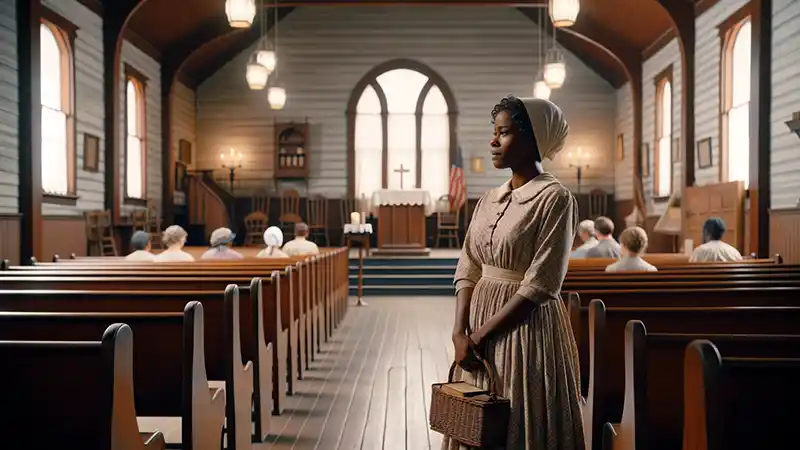This lesson plan, focusing on Chapter 12 of To Kill a Mockingbird and the memoir “You Worked Long Hours,” is designed to provide students with a rich comparative analysis of historical and fictional accounts of African American life in the early 20th century. Students will begin by reading and discussing both the chapter and the memoir, gaining insights into the life of Essie Favrot, a domestic worker, and comparing her experiences with those of Calpurnia in the novel. The accompanying worksheet will guide students through a series of questions aimed at exploring the similarities and differences between the two narratives, Calpurnia’s unique linguistic choices, and the characterization of Tom Robinson. This lesson aims to enhance students’ understanding of social and racial dynamics of the time, improve their ability to analyze literary and historical texts, and encourage them to think critically about the portrayal of African American characters in literature. By juxtaposing a real-life account with Harper Lee’s fictional world, students will develop a more nuanced understanding of the era’s social landscape and the complexities of the characters navigating it.
Learning Goals
- I will be able to identify and articulate similarities and differences between Essie Favrot’s memoir and Calpurnia’s experiences in To Kill a Mockingbird.
- I will be able to understand and explain Calpurnia’s rationale for her different modes of speech.
- I will be able to critically evaluate Harper Lee’s narrative choices, particularly the significance of the church scene with Scout, Jem, and Calpurnia.
Materials
Process
- Read the short memoir, “You Worked Long Hours” with the class.
- Read Chapter 12 of To Kill a Mockingbird.
- Answer the chapter questions.
You Worked Long Hours
Born in 1910, Essie Favrot worked for several decades for Southern white families as a domestic worker. In an interview, she described some of the situations in which she worked:
I finished out the eighth grade in the country. But by then my very oldest sister had come to stay with my aunt, and she decided it was time I came, too.
The onliest thing then was for a black girl to do was to get domestic work. So, I worked. First it was just about a two-hour job per day, five days a week for this lady that just had come up to me and asked me to work. I’d go down there to her house, clean up the house, do a little washing, and that was it. Fifty cent a day was what I made. They were poor people. They were probably just about as poor as I was, but the lady worked for a department store!
Then, I think, my brother’s mother-in-law told me that this lady needed somebody to keep her kids. So I went there and worked. I was living on the place, and that’s when I met my husband. This was in ’39, and I remember the salary had gone up to a dollar a day. I was making seven dollars [a week] because I was living on the place. And I worked every day from seven to seven.You worked long hours, but you were making a dollar a day.
I slept up in the bedroom with the little boy. There was a servant house in the backyard, but it was occupied by the cook, which was a male. It was considered his house, but I used the bathroom there.
They were rich people. I guess they owned stock. And when my mother-in-law decided to sell half her land, I don’t know why but it came for me to borrow the money. My husband had been working for his people much longer than I had. Anyway I asked them for fifty dollars to pay for the property, and they readily gave it to me. But they said they wouldn’t help me to build a house. They had got stung with another maid borrowing from them. We paid the money back
right quick, and they were surprised.
After that, I worked thirteen years for the Elliots. Now they weren’t rich people. They both worked, and they had six children. I took over the running of the house. I did everything for them—the groceries, the cleaning up, the kids. I did all for the kids—took them to the park, to school, bought their clothes, saw that they wore the right clothes to parties, all that. My neighbors used to laugh because those Elliots were such poor people. Everyone knew they were. I mean not poor white trash—no. Just working people like myself. I was fond of those kids. I still am. I worked for them until my son was born. We still keep in touch. One of the girls just died. She had cancer; that was very sad. And their mother, I worry about her. She’s had a hard time. Working for them—since they had all those kids, it was more like family for me there. I feel still sort of protective and
maternal towards them. Not like I do my own family, no, but like I would any children I’d cared for that much, watched grow up. I’d help them still anyway I could. I would . . . not go back to work, but I’d help them any other way I could.
After that, I worked days till my son got old enough to go to school. Then I worked for the Helms. I worked there for a while. And they had four kids. Two were up in age, school-age children. And they had two little kids. And I just figured, since I was taking care of her kids and cooking for them, I’d have supper done when they got there and the kids fed and clean. They both worked. And they were so congenial at first. So, when my son started school not far from where they lived, I figured they wouldn’t mind him coming down there after school and then going home with me.
But the first day after I did it, Mr. Helms say, “What happened, Essie? Did your son miss his bus?” I say, “No, he didn’t miss his bus. It’s nobody at home in the evening, so I just took your two children, and when we were on our way back from the park, we picked him up.”
“I don’t think it’s going to be such a good idea, him coming down here. That lady next door . . . . Mind you now, it’s not us,” he said. “But that lady next door don’t want him playing down here.”
So his wife she thought she could come home early so I could go home early, too. And the next evening she said, “I think I might enjoy coming on home, getting here early.” I didn’t say a word, because I knew I wasn’t going to work for nobody who had two that were not toilet trained and I had to clean both of them up and I had to cook dinner for the whole family and clean the apartment and wash their clothes. I felt if I was doing all of that for her children and her, and mine couldn’t come there in the evening, that they could have their job. After she paid me, I said, “Now you be sure and get you somebody.” I was headed to my car when I said it. And I left there and never went back. . .
Susan Tucker, Telling Memories Among Southern Women (Baton Rouge: Louisiana State University Press, 1988), 118–119.
Questions
- What are two similarities and/or differences between Essie Favrot’s memoir and Calpurnia’s experience in To Kill a Mockingbird?
- What do Scout and Jem notice about the way that Calpurnia talks when she is among other African Americans at church?
- How does Calpurnia explain the difference?
What do we learn about Tom Robinson in this chapter? - What can the reader piece together about Tom Robinson and his family that Scout does not understand?
- Why do you think that Harper Lee chose to write a scene in which Scout and Jem go to church with Calpurnia?


